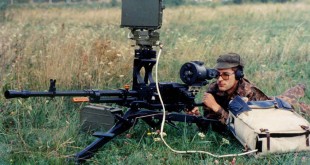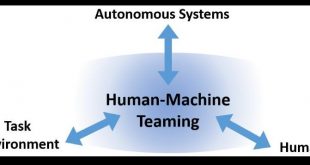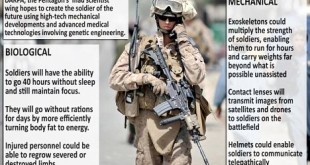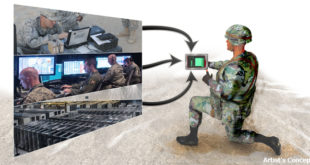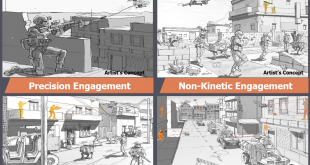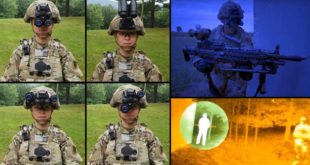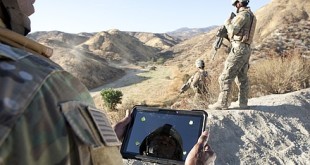Businessmen are traveling longer distances to meet potential clients, launch new projects, and negotiate deals, but traveling comes with poor sleep and jet lag. Science tells us jet lag causes everything from headaches to irritability, poor decision making, and loss of concentration. Warfighters are travelers and thus suffer from travelers’ …
Read More »Air purifiers from HEPA to Photocatalytic oxidation (PCO) have become essential in homes and for military
To stay healthy, we need to pay not only close attention to what is in the food we eat and the water we drink but also the quality of the air we breathe. The air we breathe both indoors and out can directly impact our health, quality of life, and …
Read More »Growing requirements for Man portable Radars for counterterrorism, counter UAV, maritime surveillance and battlefield applications
Radar, is an electromagnetic sensor used for detecting, locating, tracking, and recognizing objects of various kinds at considerable distances. It operates by transmitting electromagnetic energy toward objects, commonly referred to as targets, and observing the echoes returned from them. Energy is emitted in various frequencies and wavelengths from large wavelength radio …
Read More »Human Factors in Human-Machine Teaming is critical for efficient and effective integration of soldiers with complex machines.
Interactions with technologically sophisticated artificial intelligence (AI) agents are now commonplace. We increasingly rely on intelligent systems to extend our human capabilities, from chatbots that provide technical support to virtual assistants like Siri and Alexa. Examples of such systems include air traffic control, aircraft cockpits, chemical processing, and the power …
Read More »CRISPR or Gene editing can enable high IQ society and super strong soldiers while also enhancing threat of creation of novel Bioweapons by state and terrorists
Genome editing (also called gene editing) is a group of technologies that give scientists the ability to change an organism’s DNA. These technologies allow genetic material to be added, removed, or altered at particular locations in the genome. Several approaches to genome editing have been developed. CRISPR is a …
Read More »Internet of Medical Things (IoMT) technologies revolutionizing healthcare, telemedicine and Real time Soldier health Monitoring
A new paradigm, known as the Internet of Things (IoT), has an extensive applicability in numerous areas, including healthcare. IoT stands for the “Internet of Things.” It refers to the network of physical devices, vehicles, appliances, and other items that are embedded with sensors, software, and connectivity, allowing them to connect …
Read More »DARPA’s WiSPER program developing next generation spread spectrum based military tactical radio to enable secure high-bandwidth RF communications
U.S. military researchers are asking industry to develop secure radio frequency (RF) transmitter and receiver technologies to enable the next generation of secure military tactical radio systems. Tactical communications is critical requirement of military communications in which information of any kind, especially orders and military intelligence, are conveyed from one …
Read More »DARPA’s Squad X revolutionising infantry squads by integrating Unmanned air and ground vehicles, new technologies for Precision engagement, Electronic Warfare, Situational Awareness and Autonomy
Modern military engagements increasingly take place in complex and uncertain battlefield conditions where attacks can come from multiple directions at once, and in the electromagnetic spectrum and cyber domains as well. U.S. Army and U.S. Marine Corps dismounted infantry squads, however, have been unable to take full advantage of some …
Read More »Night Vision Devices integrated with cellphones and Google Glass like wearables will provide future Soldiers greater situational awareness
Night vision devices are becoming essential equipment for night driving, night flying and night surveillance, wildlife observation and search and rescue missions. According to Industry ARC’s report on Night vision devices, the market is estimated to grow to $20.5 billion in 2020 at a CAGR of 7%. Since the …
Read More »Militaries adopting rugged 5G enabled Notebooks, tablets and smart phones into tactical operations, however their vulnerability requires secure solutions
Military is increasingly looking to commercial ICT devices like Smartphones and tablets and they are rapidly making their way into military operations. Mobility continues to transform how the Department of Defense (DoD) operates, connects, and supports its stakeholders – most significantly, through the use of commercial mobile solutions to provide …
Read More » International Defense Security & Technology Your trusted Source for News, Research and Analysis
International Defense Security & Technology Your trusted Source for News, Research and Analysis


